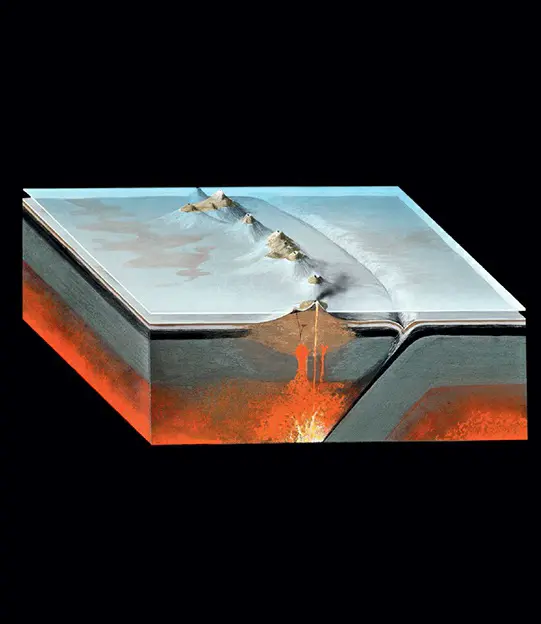The concept of island arcs and the understanding of seismic activity patterns were significantly advanced by the work of Kiyoo Wadati and Hugo Benioff in the early to mid-20th century. Before the widespread acceptance of plate tectonics, these geophysicists used seismometer networks to trace earthquake patterns and deepen our understanding of Earth’s geology.
In the late 1920s, Japanese geophysicist Kiyoo Wadati discovered that many earthquakes occurred deep below the Earth’s surface, particularly in zones underneath ocean-floor valleys like the Marianas Trench. Building on Wadati’s findings, American seismologist Hugo Benioff in 1949 identified inclined zones of seismic activity around the Pacific Rim, often at angles of up to 45 degrees.
These discoveries led to the identification of island arcs – curved chains of volcanoes formed above zones where oceanic crust subducts under adjacent crust, creating intense heat and pressure that result in volcanic eruptions. The earthquake zones along these subducting slabs are now known as Wadati-Benioff zones.
The observations of volcanic arcs, deep ocean trenches, and seismic activity along subducting slabs provided substantial evidence supporting Alfred Wegener’s Continental Drift hypothesis. These findings laid the groundwork for the eventual acceptance of plate tectonics, further solidified by the mapping of the seafloor, the discovery of mid-ocean ridges, and the magnetic signatures indicating the creation of new oceanic crust at these spreading ridges.

